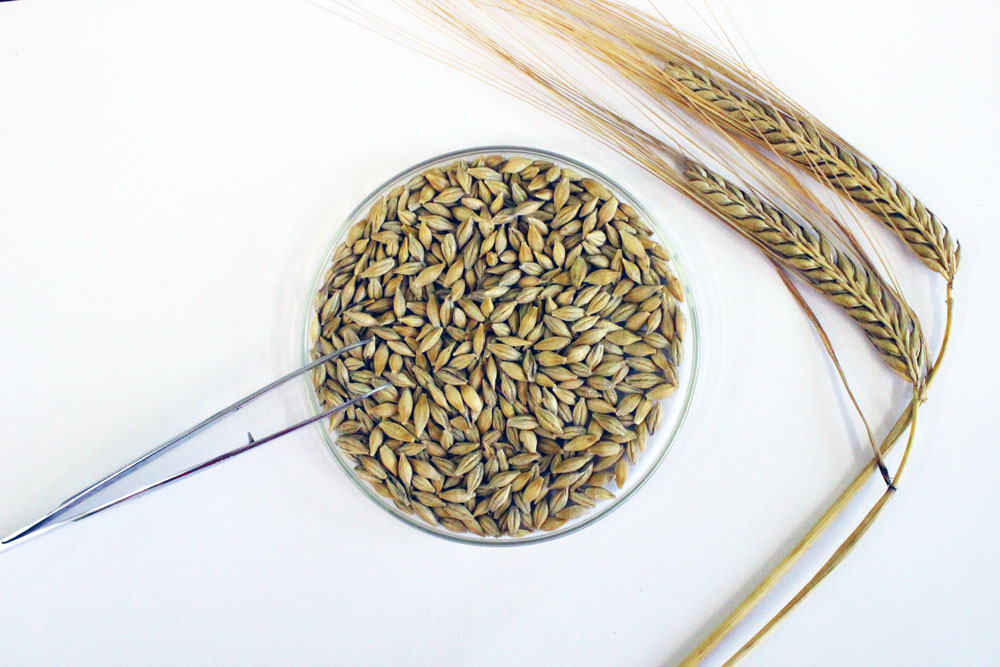Our Barley
Producing the highest quality malt starts with the finest natural raw material.
Minch Malt has developed a leading world-class enclosed supply chain in malting barley where we ensure our customers of complete traceability from seed to glass. We supply our very own independently certified seed to over 600 of our approved growers, who grow and harvest malting barley across 8 different counties in Ireland. Come harvest time each of the 8000 loads of barley are analysed to ensure they meet our highest quality standard before being accepted as Minch Malt Malting Barley.

The selection of 2-row spring malting barley seed varieties starts by using cutting edge breeding programs. These are supported by our own extensive research and innovation in conjunction with the Irish Department of Agriculture. Our malting barley varieties are approved by the Institute of Brewing and Distilling, as well as being formally tested and approved for suitability by the Department of Agriculture, creating national recommended lists for Malting Barley varieties annually. We grow our malting barley C1 superior voluntary standard seed in partnership with 45 dedicated expert Irish seed producers, who have a history of excellence in seed production.
Minch Malt has carefully selected over 600 of whom we believe to be the best growers on the finest lands in Ireland to produce our malting barley.
They grow 2-row spring barley varieties in Counties Kildare, Wexford, Wicklow, Carlow, Laois, Tipperary, Offaly and Kilkenny to world-class agronomy standards.
Our Agronomy Team specifically tailors an agronomic package for each grower, which is aligned to Minch Malt and Teagasc recommended best practice. This ensures that the highest possible quality malting barley is produced for our malting in Athy on a consistent basis, year in year out.
Throughout the growing season the Agronomy Team visits the malting barley growers at regular intervals to ensure that best practice is implemented at critical growth stages. To further this knowledge transfer, focus groups, field evenings, trials open days, crop reports and SMS messaging are utilised to deliver updates on crop husbandry when required.
The responsibility for achieving the highest quality from the selected varieties rests on the shoulders of our dedicated Malting Barley Agronomy Team. Our team has over 150 years of experience in the production of sustainable quality malting barley.
To ensure that our Agronomy Team has the latest information and techniques in agronomy, Minch Malt has an extensive Research and Innovation program, supported by the Faculty of Agriculture, University College Dublin, Ireland, which is designed to deliver environmental and economic sustainability through over 1,450 replicated plots, investigating various husbandry methods which lead to best practice in malting barley production.
Minch Malt is committed to minimising the impact that our business has on the environment, enhancing the community and improving the economic return to our farm families by using sustainable processes and helping to protect and preserve Ireland’s natural resources. We are proud to be a fully verified member of Origin Green, Ireland’s national sustainability programme, which uses the Sustainable Agricultural Initiative as its key driver to deliver sustainability.
We are also FEMAS registered and REPAK compliant.







